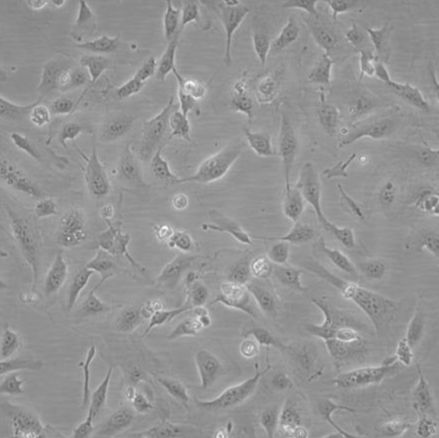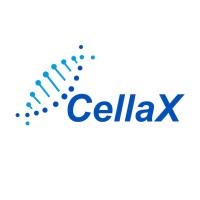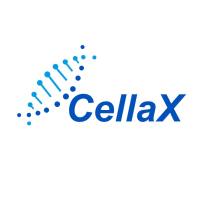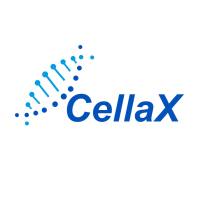
产品详情
文献和实验
相关推荐
英文名 :THLE-2
库存 :1×10^6 cells
ATCC Number :CRL-2706
物种来源 :人
细胞形态 :上皮细胞样
是否是肿瘤细胞 :是
器官来源 :肝
运输方式 :常温/干冰
生长状态 :贴壁生长
规格 :T25培养瓶/冻存管
THLE-2THLE-2 is an epithelial cell that was isolated from the left lobe of a donor. This cell line was deposited by the National Cancer Institute.
| Product category | Human cells |
| Organism | Homo sapiens, human |
| Cell type | epithelial cell |
| Morphology | epithelial |
| Tissue | Liver; Left lobe |
| Disease | - |
| Applications | 3D cell culture |
Characteristics
| Growth properties | Adherent |
| Derivation | The THLE-2 and the THLE-3 cell lines were derived from primary normal liver cells by infection with SV40 large T antigen. [RF84749] The virus was generated by introducing a retroviral vector containing the of Bgl I-Hpa I fragment of SV40 T antigen into the amphotropic packaging cell line PA317. |
| Age | Adult |
| Immortalization method | SV40 large T antigen transformed |
| Gender | Male |
| Karyotype | near diploid |
| Tumorigenic | No; No, nude mice |
| Comments | [RF84750] THLE-2 and THLE-3 cells express phenotypic characteristics of normal adult liver epithelial cells. They are nontumorigenic when injected into athymic nude mice, have near-diploid karyotypes, and do not express alpha-fetoprotein. [RF84750] THLE-2 and THLE-3 cells metabolize benzo[a]pyrene, N-nitrosodimethylamine, and aflatoxin B1 to their ultimate carcinogenic metabolites that adduct DNA, which indicates functional cytochrome P450 pathways. [RF84750] Other enzymes involved in metabolism of chemical carcinogens, such as epoxide hydrolase, NADPH cytochrome P450 reductase, superoxide dismutase, catalase, glutathione S-transferases, and glutathione peroxidase are also retained by THLE cells. [RF84750] A culture submitted to the ATCC in May of 1989 was found to be contaminated with mycoplasma. Progeny were cured by a 21-day treatment with BM Cycline. The cells were assayed for mycoplasma, by the Hoechst stain, PCR and the standard culture test, after a six-week period following treatment. All tests were negative. |
Handling information
| Unpacking and storage instructions | 1. Check all containers for leakage or breakage. 2. Remove the frozen cells from the dry ice packaging and immediately place the cells at a temperature below -130°C, preferably in liquid nitrogen vapor, until ready for use. |
| Complete medium | BEGM from Lonza/Clonetics Corporation, Walkersville, MD 21793 (BEGM Bullet Kit; CC3170). The kit includes 500 mL basal medium and separate frozen additives from which we discard the gentamycin/ Amphotericin (GA) and Epinephrine and to which we add extra 5 ng/mL EGF, 70 ng/mL Phosphoethanolamine and 10% fetal bovine serum. |
| Temperature | 37°C |
| Atmosphere | 95% Air, 5% CO2 |
| Handling procedure |
Note: The flasks used should be precoated with a mixture of 0.01 mg/mL fibronectin, 0.03 mg/mL bovine collagen type I and 0.01 mg/mL bovine serum albumin dissolved in BEBM medium. 1. Thaw the vial by gentle agitation in a 37°C water bath. To reduce the possibility of contamination, keep the O-ring and cap out of the water. Thawing should be rapid (approximately 2 minutes).To insure the highest level of viability, thaw the vial and initiate the culture as soon as possible upon receipt. If upon arrival, continued storage of the frozen culture is necessary, it should be stored in liquid nitrogen vapor phase and not at -70°C. Storage at -70°C will result in loss of viability. 2. Remove the vial from the water bath as soon as the contents are thawed, and decontaminate by dipping in or spraying with 70% ethanol. All of the operations from this point on should be carried out under strict aseptic conditions. 3. Transfer the vial contents to a centrifuge tube containing 9.0 mL complete culture medium and spin at approximately 125 x g for 5 to 7 minutes. 4. Resuspend cell pellet with the recommended complete medium (see the specific batch information for the culture recommended dilution ratio) and dispense into a 25 cm2 or a 75 cm2 culture flask. It is important to avoid excessive alkalinity of the medium during recovery of the cells. It is suggested that, prior to the addition of the vial contents, the culture vessel containing the complete growth medium be placed into the incubator for at least 15 minutes to allow the medium to reach its normal pH (7.0 to 7.6). 5. Incubate the culture at 37°C in a suitable incubator. A 5% CO2 in air atmosphere is recommended if using the medium described on this product sheet. |
| Subculturing procedure |
Volumes used in this protocol are for 75 cm2 flask; proportionally reduce or increase amount of dissociation medium for culture vessels of other sizes. 1. Remove and discard culture medium.Note: The flasks used should be precoated with a mixture of 0.01 mg/mL fibronectin, 0.03 mg/mL bovine collagen type I and 0.01 mg/mL bovine serum albumin dissolved in BEBM medium. 2. Add a fresh 0.05% trypsin-EDTA solution (2.0 – 3.0 mls for a T75 flask) to cover the cells, rinse and remove most of the trypsin solution leaving a thin coating behind. 3. Allow the culture to sit at room temperature (or 37°C) until the cells detach and ob-serve cells under an inverted microscope until cell layer is dispersed (usually within 5 to 15 minutes). Note: To avoid clumping do not agitate the cells by hitting or shaking the flask while waiting for the cells to detach. Cells that are difficult to detach may be placed at 37°C to facilitate dispersal. 4. Neutralize the trypsin with 0.1% soybean trypsin inhibitor and aspirate cells by gently pipetting. Remove the dissociation agent by gentle centrifugation (150 x g to 400 x g for 8-12 minutes) and resuspend cells in fresh complete growth medium. 5. Add appropriate aliquots of the cell suspension to new culture vessels. 6. Incubate cultures at 37°C. 7. A 0.05% Trypsin-EDTA solution is recommended for dissociation. Neutralize with a 0.1% Soybean Trypsin inhibitor solution.
Subculture Ratio: 1:3 to 1:6 Medium Renewal: Two to three times a week. |
| Reagents for cryopreservation | Complete growth medium supplemented with 5% (v/v) DMSO. |
Quality control specifications
| Mycoplasma contamination | Not detected |
| STR profiling | Amelogenin: X,Y CSF1PO: 11,13 D13S317: 8,12 D16S539: 11,13 D5S818: 11,13 D7S820: 10,12 TH01: 7,9.3 TPOX: 8,11 vWA: 16,17 D3S1358: 14,15 D21S11: 30,32.2 D18S51: 13,16 Penta_E: 12,13 Penta_D: 10,13 D8S1179: 13 FGA: 22,24 D19S433: 14 D2S1338: 17,23 |

上海赛澜斯生物技术有限责任公司
实名认证
金牌会员
入驻年限:1年





